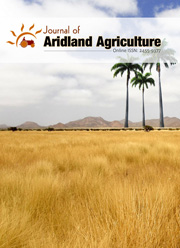Performance Evaluation of Grain Yield and Yield Related Traits in Common bean Genotypes at Yabello and Abaya, Southern Ethiopia
DOI:
https://doi.org/10.25081/jaa.2017.v3.3365Abstract
Common bean is among the major crops grown in southern Ethiopia including Borana zone where the majority of the farmers are Agro-pastoralist and produce the crop mainly for home consumption. The area has potential to the production of common bean for food and nutrition security as well as export commodity. However, scarcity of varieties that fit to the environment is one of the major constraints of production. Therefore, this experiment was conducted to evaluate 36 common bean genotypes including seven released varieties to evaluate performance of genotypes for yield and agronomic traits. The field experiment was conducted in 2015 at two locations (Abaya and Yabello) and genotypes were planted in triple lattice design. Data were collected on yield and important agronomic traits. Analysis of variance computed for individual locations and combined analysis over locations revealed significant variations among genotypes for all traits. Moreover, 16.67% of the genotypes had mean grain yield greater than the best performing released variety across locations and the genotypes showed a grain yield as high as 3.25 tons ha-1. Based on results of this study it is recommended to test the high yielding and early maturing genotypes at many locations to develop preferred varieties across many locations.





 .
.